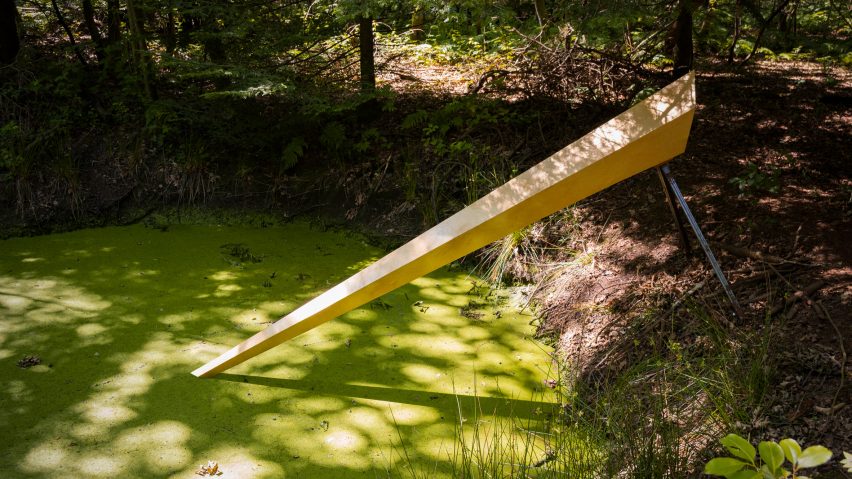Bacteria from a boggy World War Two bomb crater generate kaleidoscopic light forms inside this telescope-like tube by Dutch designer Teresa van Dongen.
The Mud Well installation is the latest iteration of Van Dongen's ongoing research into geobacter bacteria as an electricity source for human use.
The microorganisms, which can purify water while naturally and continuously excreting electrons, are found in the muddy soil of rivers and lakes.
In this case, Van Dongen found a good supply in an old bomb crater – according to the designer, it's actually one of the strongest geobacter ecosystems she has ever encountered.
Commissioned by Oerol arts festival and Atelier NL, she built the telescope-like Mud Well so that it sits at the foot of the crater, with one end immersed in the bacteria-rich muck.
The other end is within the eye-line of visitors. When they peer into the five-sided tunnel, they can see a kaleidoscope of light, created by energy from the microbes.
Mud Well was installed at the Oerol Festival, an event dedicated to site-specific art and performance on the island of Terschelling in The Netherlands from 14 to 23 June.
Van Dongen is now exploring whether the installation can live on as a consumer product — a lamp that incorporates organisms from the bomb crater to run without an external source of electricity.
"I keep working with bacteria because I think there is a real perspective of eventually using their energy in our daily life and homes," Van Dongen told Dezeen.
Unlike in the crater, where the ecosystem is self-sustaining, the lamp's bacteria would need regular nurturing from their future owner, who would have to feed them once a week with tap water and a teaspoon of vinegar.
Rather than being a hassle, Van Dongen believes this ritual would create "a closer relationship between the (living) object and its owner".
Van Dongen studied biology before going to Design Academy Eindhoven. She is conducting her research into geobacter at the Center for Microbial Ecology and Technology at Ghent University.
Her previous projects using the microorganisms include a lamp called Spark of Life and another called Electric Life.
"I have, over the years learned a lot, made great improvements in the hardware of the technology and created my own type of bacteria battery," Van Dongen told Dezeen.
"The electrode is now functioning optimally to support the bacterial life and harvest the energy of the electro-active bacteria."
She added that when it came to using the bacteria indoors, her latest system was durable and user-friendly.
"It will take you only five minutes a week to feed and take care of the light installation by inserting some tapwater with vinegar with a syringe," said Van Dongen. "If you take good care of it, it can last forever."

